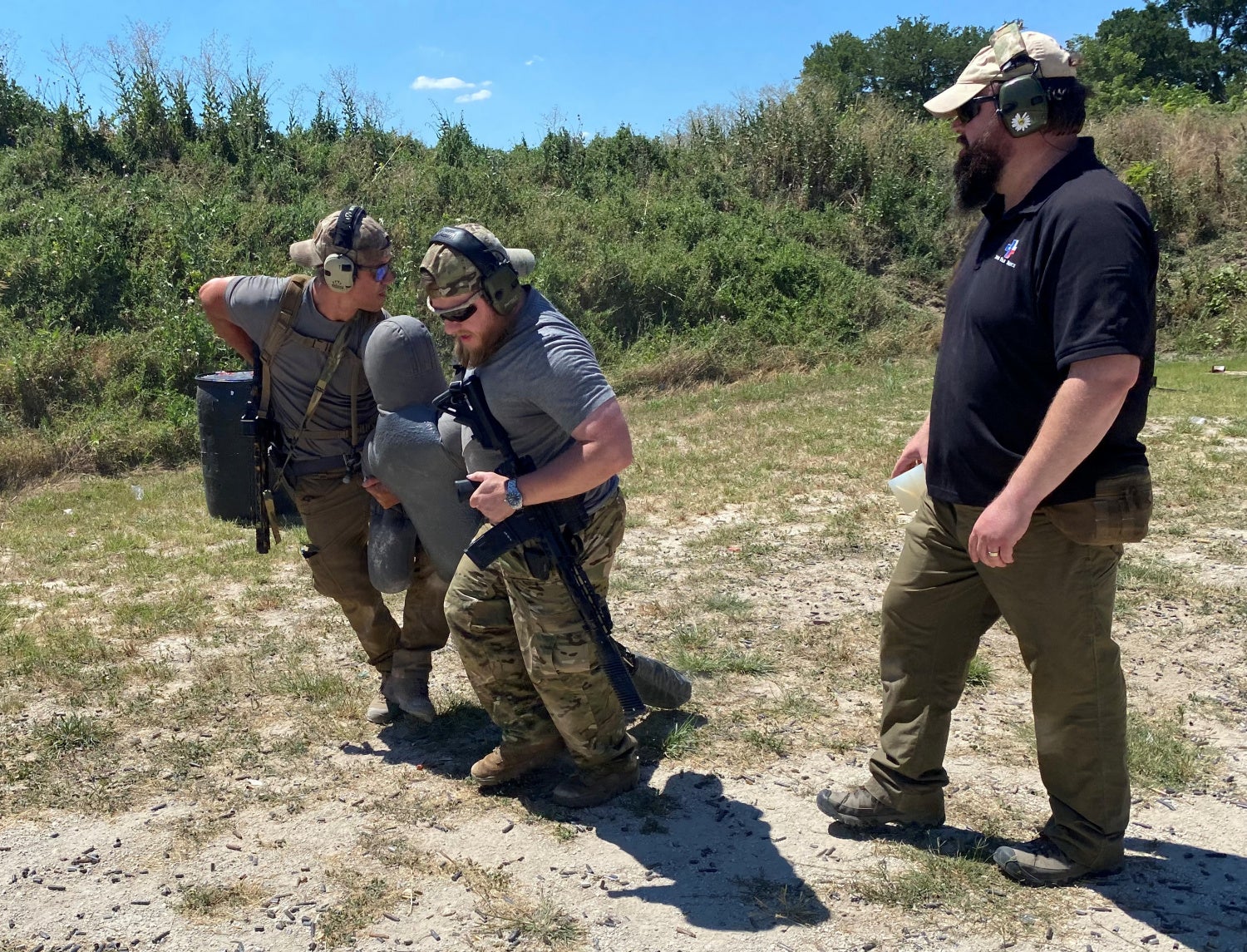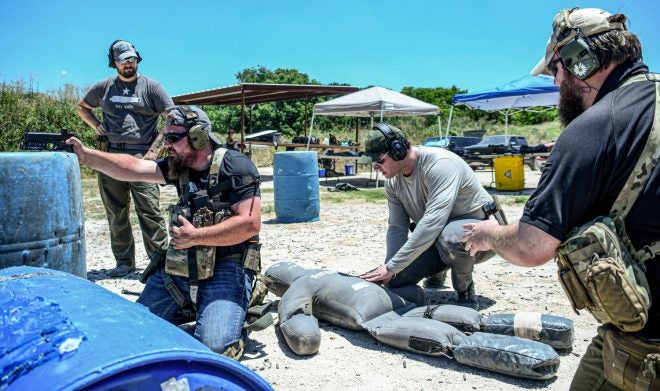Most gun owners, particularly concealed carriers and those who employ firearms as part of their profession, have had to consider the possibility of defensive firearms use. We’ve thought about what might theoretically happen in various scenarios – a home invasion, a parking lot mugging, maybe a carjacking – and how we would react. There is an entire cottage industry on the subject, with a plethora of related books, websites, videos, and training classes. But for all the time, money, and energy we spend preparing to defend ourselves from violence, what about the post-event fallout?
On the off chance you did get attacked, what then? There would likely be at least one casualty in that case, possibly more. Hopefully, your self-defense preparation (plus a little bit of luck) would allow you to prevail, but even if you did, there’s a chance you yourself could be among the injured. Are you prepared to deal with that aspect of self-preservation? Winning a gunfight wouldn’t do you much good if you succumbed to a wound in the aftermath – and consider that you could also have a loved one or innocent bystander caught in the crossfire. We hope these terrible things never happen, but the unfortunate reality is that they can and do. What can we do to mitigate these risks? Enter medical training company Lone Star Medics, with their “Medicine X” training course.

Lead Instructor Caleb Causey provides guidance to a student applying a tourniquet and pressure dressing to a simulated casualty, while his teammate provides security.
Like many of you, I have had many of the same thoughts and concerns addressed above. Thankfully, I discovered a way to do something about it and obtain a baseline of emergency medical response education. Several years ago I learned of the existence of Lone Star Medics through some friends who are fellow shooters and responsible gun owners. As is common, prior to that point I hadn’t thought a lot about what to do in a medical emergency, violence-related or otherwise. I simply assumed what many others do; that I would call 911 and let the medical professionals handle it. Here’s the problem with that theory: there’s an unavoidable lag time involved, and all too often they arrive too late. What if I had the capability to slash that lag time and be my own first responder? What if I could add some basic medical competency to my skillset arsenal with the right mindset, education, and tools? Lone Star Medics, and companies like them, exist for precisely that reason. They bring many years of professional medical expertise to the table, distill this info into a practically-applicable form for laypeople, and present it in an engaging way that facilitates effective education. I know this because I have taken several Lone Star Medics courses, most recently Medicine X in June. I’ll break down the experience into the two days the class spanned.

The author and another student, John Radzwilla of Hook & Barrel magazine, move “Rescue Randy” to safety – behind cover and away from the location where he sustained the notional injury, or “off of the X”.

A team of students using a litter to move the dummy patient as Lone Star Medics’ Primary Instructor looks on.
Lone Star Medics “Medicine X”, Day One: Classroom
For the first of our eight-hour days, we gathered in a meeting space in Fort Worth, TX. The class size was intentionally kept small, with only nine students including myself. Some Lone Star Medics courses work well with larger numbers but due to the safety aspects of Medicine X, given the live-fire component, they purposely maintain a lower student/instructor ratio. In addition to the Primary Instructor, Caleb Causey, Lone Star Medics included several support and safety personnel as well as two outside Assistant Instructors well-versed in the tactical world and its medical aspect. The first was Kyle Omberg of Fire Fight Underwater Recovery, a US Marine Corps veteran and retired law enforcement officer who now specializes in water/scuba rescue. The second was Andrew Brady of Lone Star Armory, a US Army veteran with firsthand experience in the application of tactical medicine from his service in combat during Operation Iraqi Freedom. With this cadre, the first class day was dedicated to gaining a fundamental understanding of what medical measures to take, and when, in an emergency situation. We discussed basic scene safety, casualty drags and carry techniques (to get off of the “X”, referring to the site of an attack/incident, for which the class is named), patient/injury assessment standards, and when/how to properly apply medical equipment like tourniquets, pressure dressings, chest seals, hemostatic gauze, and more. In addition to the instructor’s thorough and knowledgeable explanations of the science involved, we also got hands-on experience practicing these techniques. One of the tremendous benefits of learning with Lone Star Medics is the abundance of practice tools made available thanks to partnerships with companies like TacMed Solutions for training medical supplies, and Vertx for a variety of soft goods and bags to test different carry methods. At the end of day one, all the students agreed that they had learned a lot of useful information. The key would come on day two when we would pressure test what we had learned.

Radzwilla trains in proper tourniquet application, a key skill that can be used to stop major bleeds.
Lone Star Medics “Medicine X”, Day Two: Range
For range day, a change of venue was required. We gathered first thing in the morning at Triple C Range in Cresson, TX, about 45 minutes southwest of Fort Worth. The day began with a skills assessment, in which each student was required to safely and competently fire three rounds at a target with their rifle, reload, repeat, and then transition to pistol to do the same. This assessment was completed to allow the instructors and range safety personnel to ensure each student’s skill levels were on par for a safe course, given that we were to integrate medical skill application into a series of live-fire scenarios meant to replicate potential violent encounter situations. As one example, barricades and targets were arranged around a simulated casualty (a human-shaped 165-pound sandbag, affectionately nicknamed “Rescue Randy”) and the scenario was given: the two-man student team had been out running errands when armed robbers entered Costco for a smash-and-grab jewelry heist. Though this may sound unlikely, Causey was actually in the store with his wife and infant in 2018 when this really happened. Although thankfully that day no shots were fired and no one was injured, the incident could easily have gotten much messier – and for the purposes of the training scenario, we practiced as though it did. The student teams had to work their way to the casualty, moving between cover, using solid communication, and putting down threats along the way. For this task, I paired up with John Radzwilla of Hook and Barrel magazine, who is also responsible for the photos you see here and has graciously granted TFB permission to use them. We then had to assess and treat “Rescue Randy’s” simulated wounds, which were mocked up and/or described by the instructors as needed. If a student made a medical mistake – for example, skipping an assessment step or incorrectly applying a tourniquet to the patient – they might be penalized by suffering a simulated injury themselves. This also offered additional training opportunities to apply skills under pressure, as a student might have to shoot an additional target and self-apply a tourniquet before returning to their patient. Communication and coordination between students were also critical, in addition to good shooting and medical response, just as it could be in real life. Throughout the day we ran through several scenarios alone or with other students, stopping in between to discuss and shore up our learning, as well as hydrate against the near 100-degree Texas heat.

The author using a break in the action to practice applying a tourniquet on one of the class’ assistant instructors.
In all, this was an excellent experience. Even though it was not my first exposure to most of this information (having taken other medical training courses previously, as well as undergoing similar Combat Lifesaver certification when I was in the military), I still learned a lot. The class refreshed much of what I had been taught before, and also brought new information. As importantly, it reminded me that medical skills are perishable, much like shooting. I definitely had to dust the proverbial cobwebs off of my own skillsets when we broke out the training medical gear! Finally, one of the best aspects of this kind of training is how broadly applicable it is. The overwhelming majority of us who carry a concealed handgun every day will never need to use it, but medical emergencies are exponentially more common. Much of the material covered by the class could also come in handy if you came upon a car wreck or home/workplace accident.

Radzwilla and the author working as a two-man team to train in effectively treating injuries and shooting the threats that caused them.
For me – although I love taking firearms classes – I purposefully choose to invest some of my time and training budget into courses like those offered by Lone Star Medics and others like Dark Angel Medical, because I know medical emergencies can strike anytime, anywhere. I would hate to ever have to attend the funeral of a loved one wondering if there was something more I could’ve done to save them. Getting some good medical training can help mitigate those risks; even without a violent encounter (and certainly with one), it could very well mean the difference between life and death. Are you as prepared as possible to deal with such a catastrophe? If you or a loved one was at risk of potentially bleeding out before an ambulance arrived, have you learned and practiced what to do? I cannot recommend this kind of training enough, and I am exceedingly glad there are companies like Lone Star Medics who are passionate about providing this lifesaving instruction to people. If you haven’t yet, take a class, and if you already have – take another one! I know I certainly will. See you at the range!

Lone Star Medics owner and Primary Instructor Caleb Causey teaching his “Medicine X” class.
 Your Privacy Choices
Your Privacy Choices
